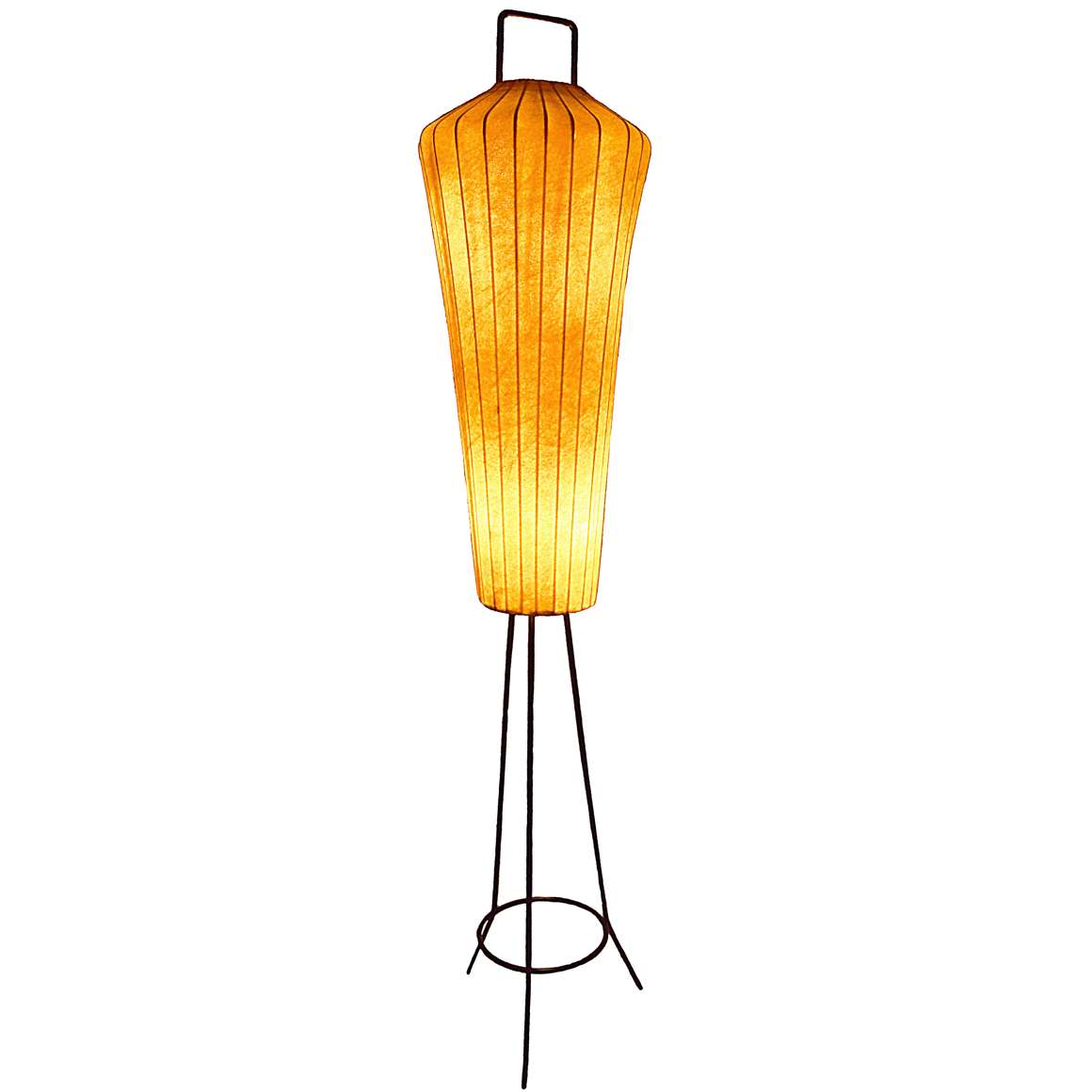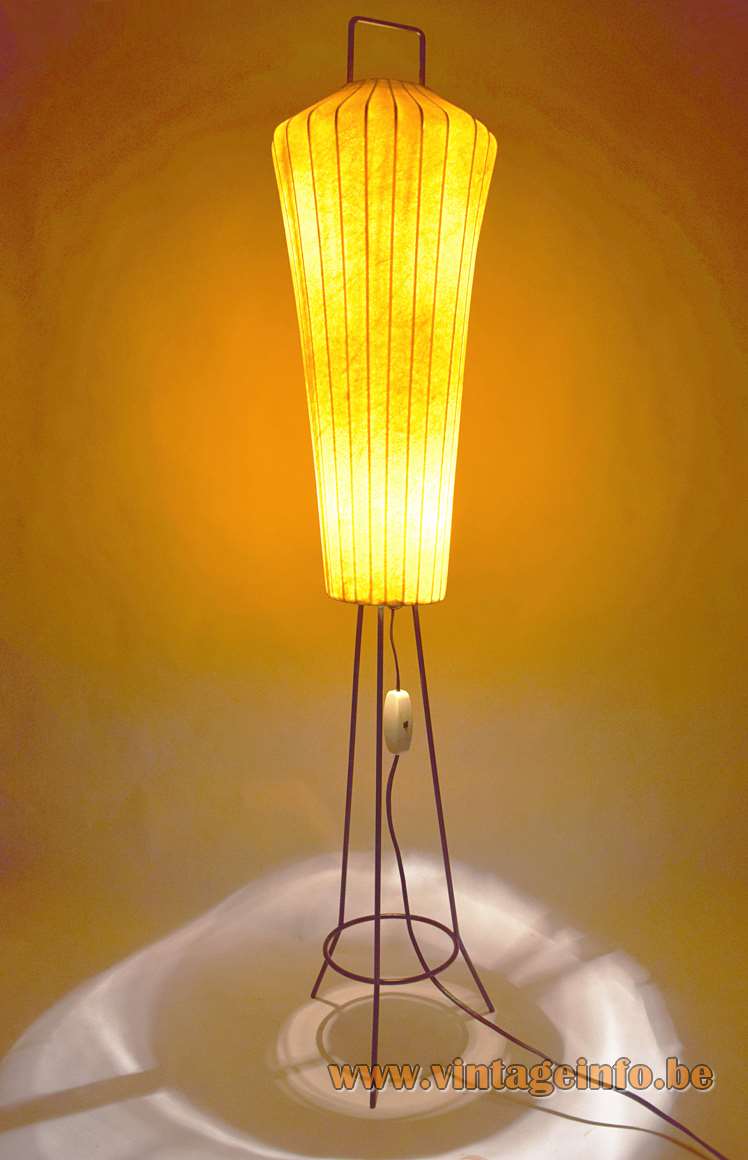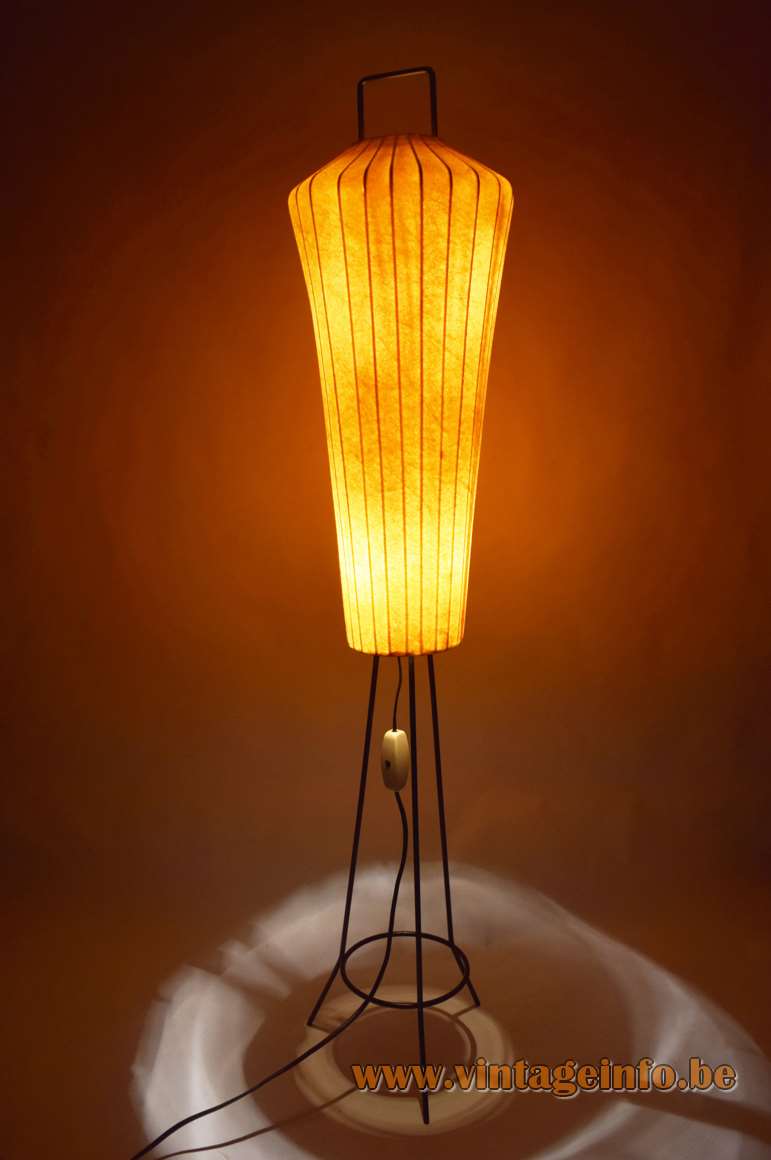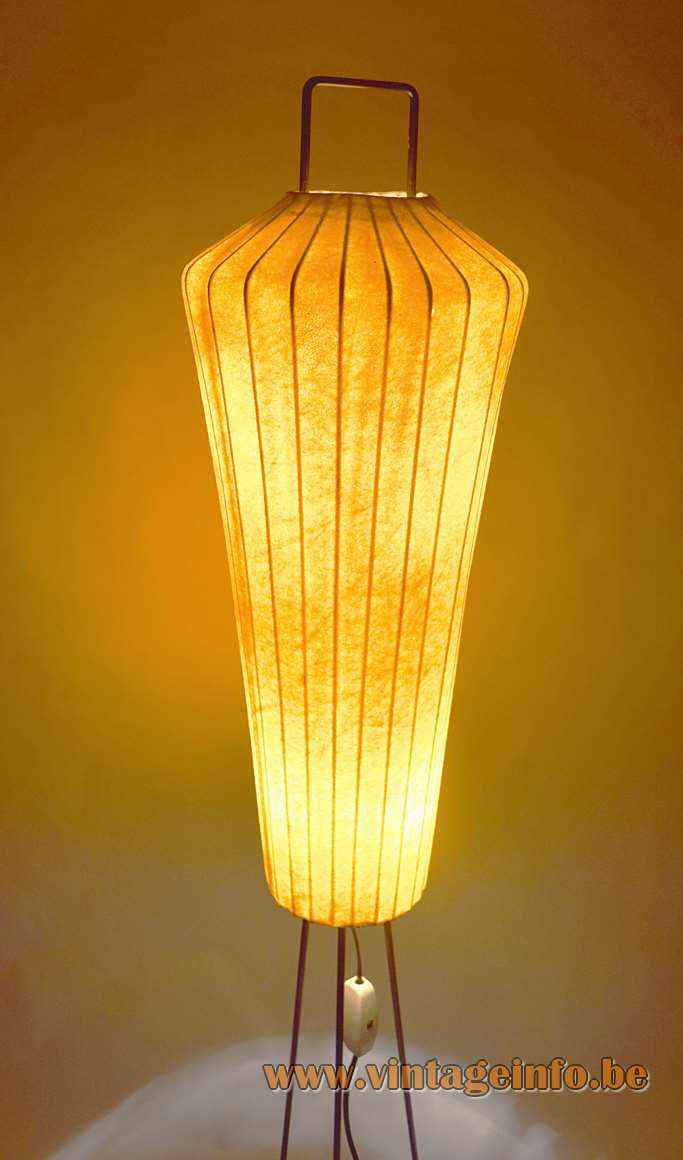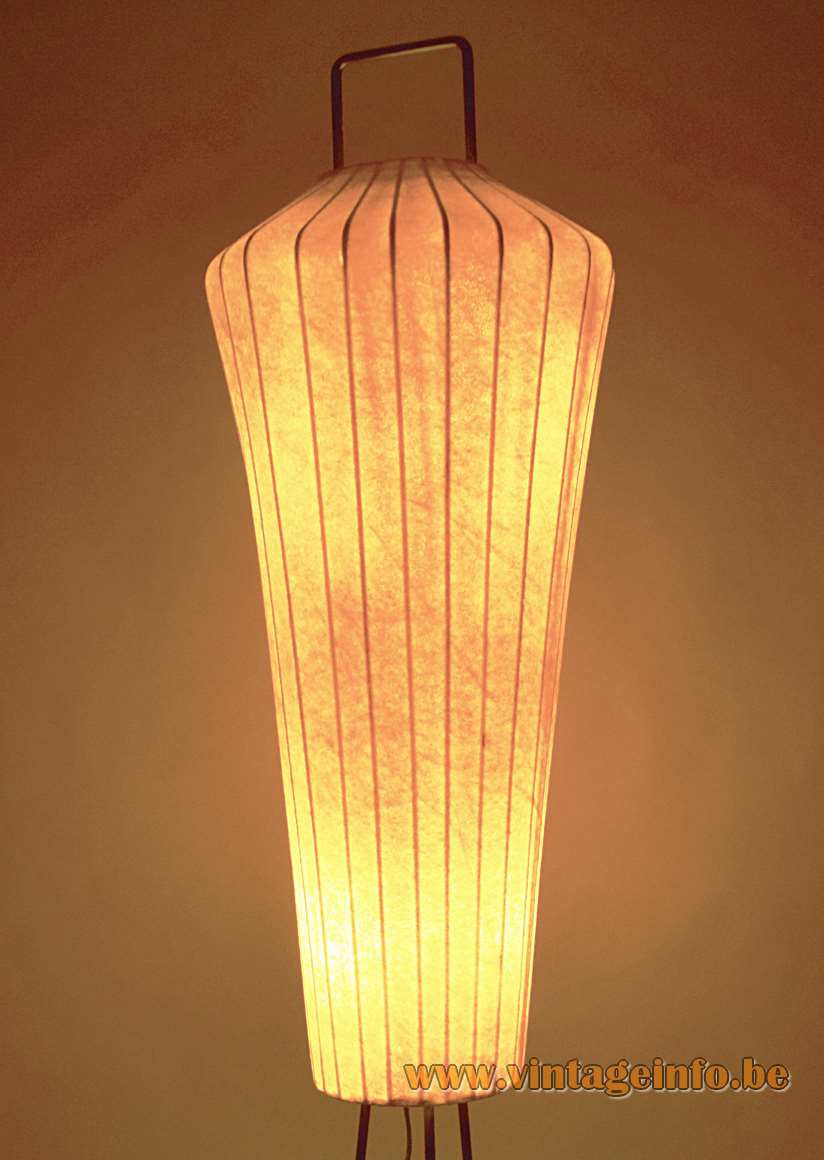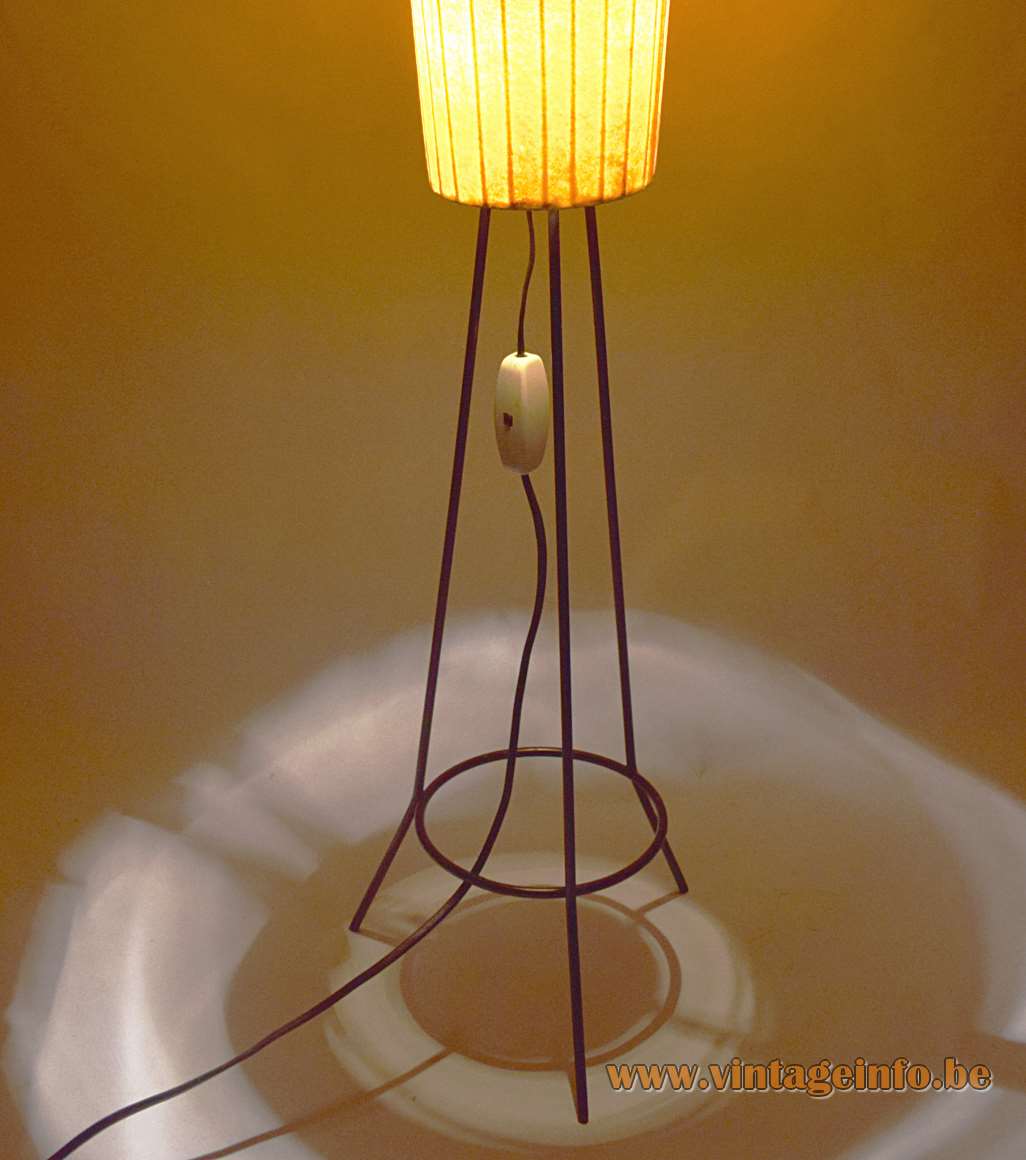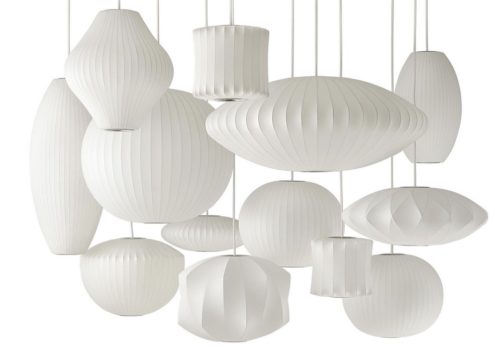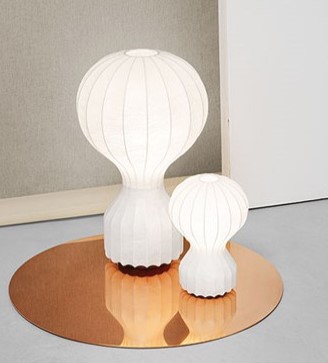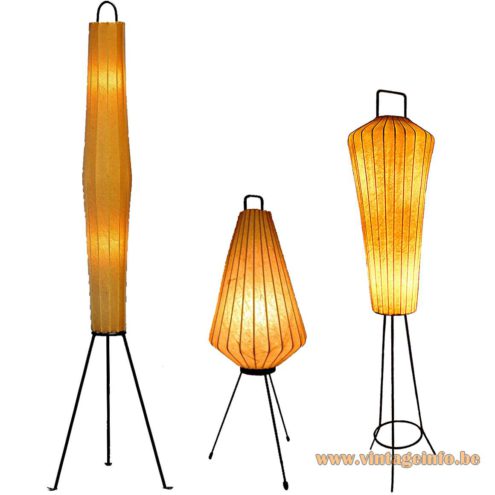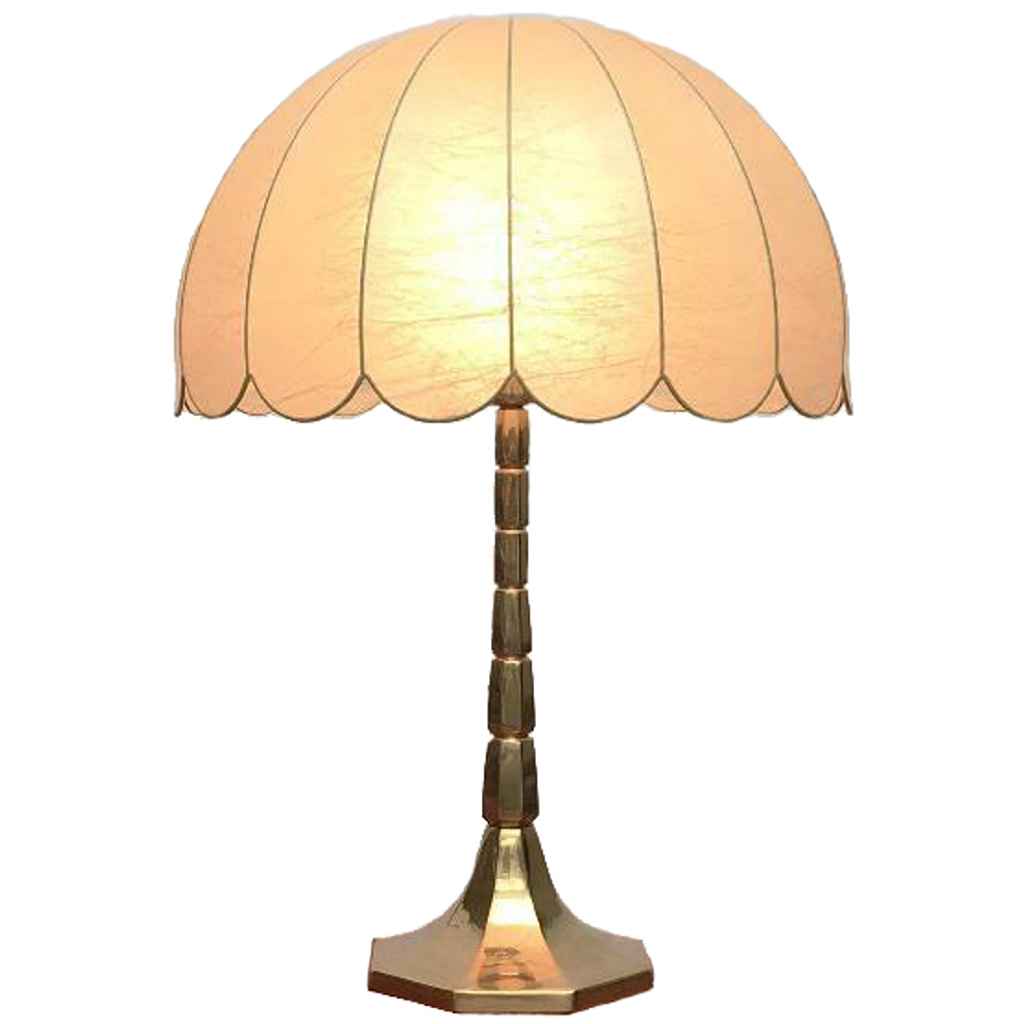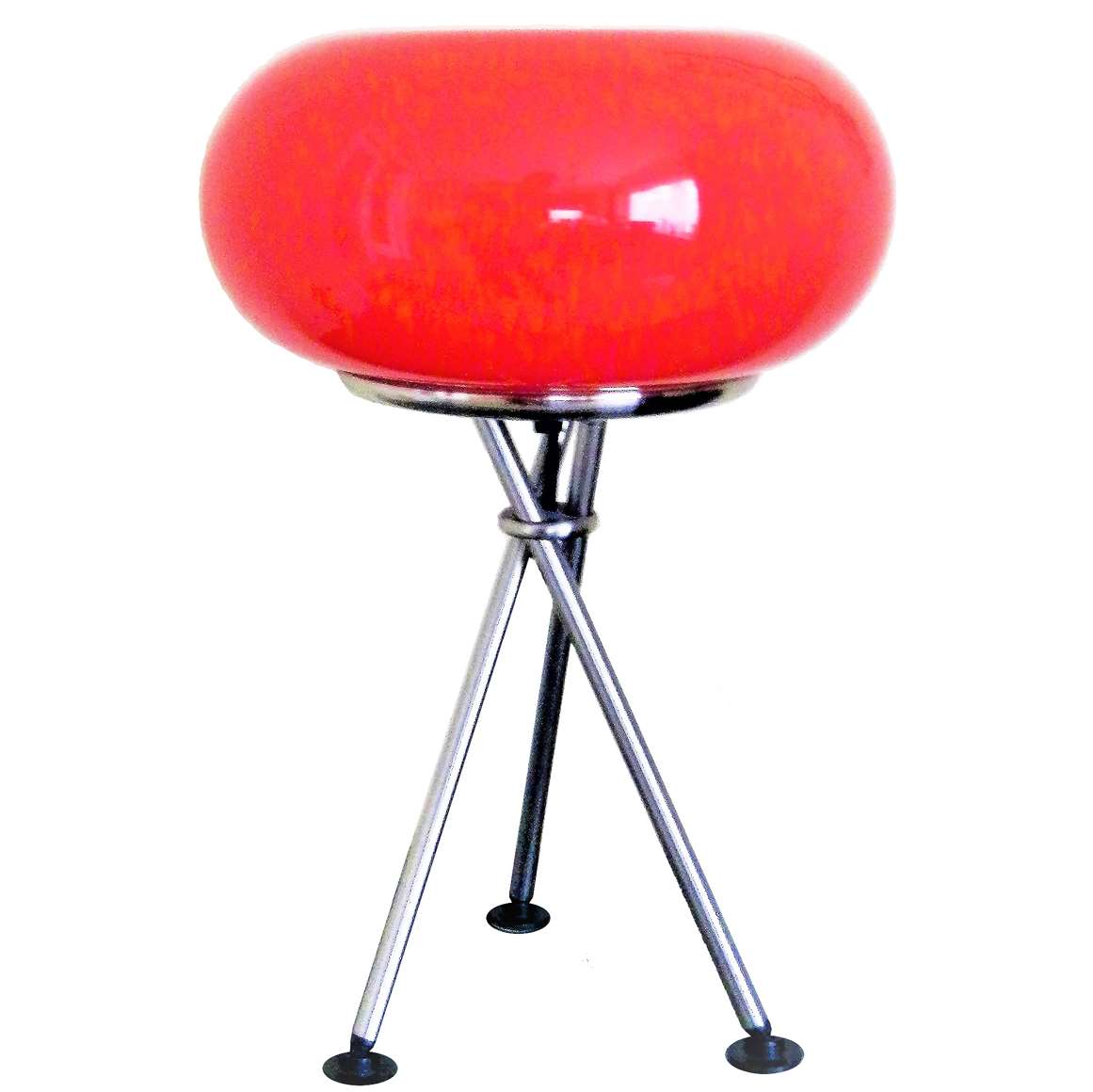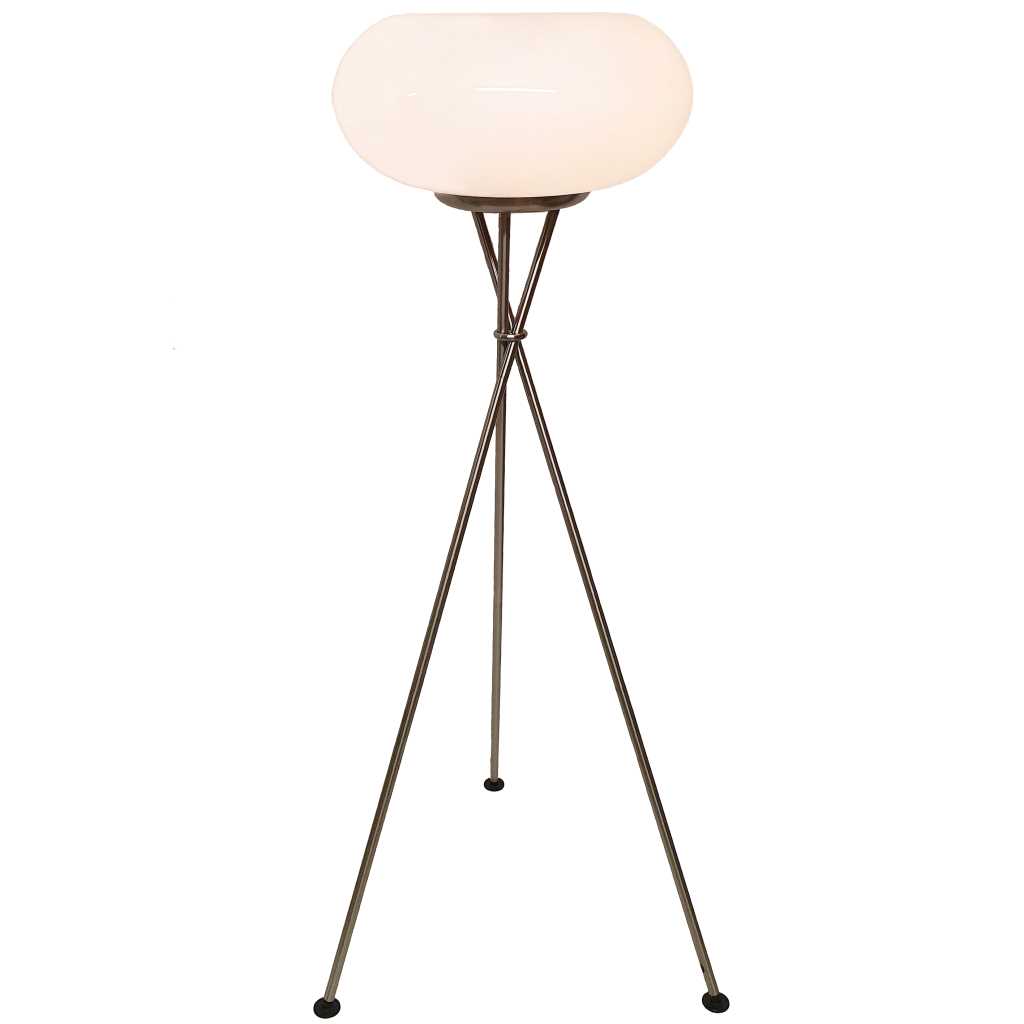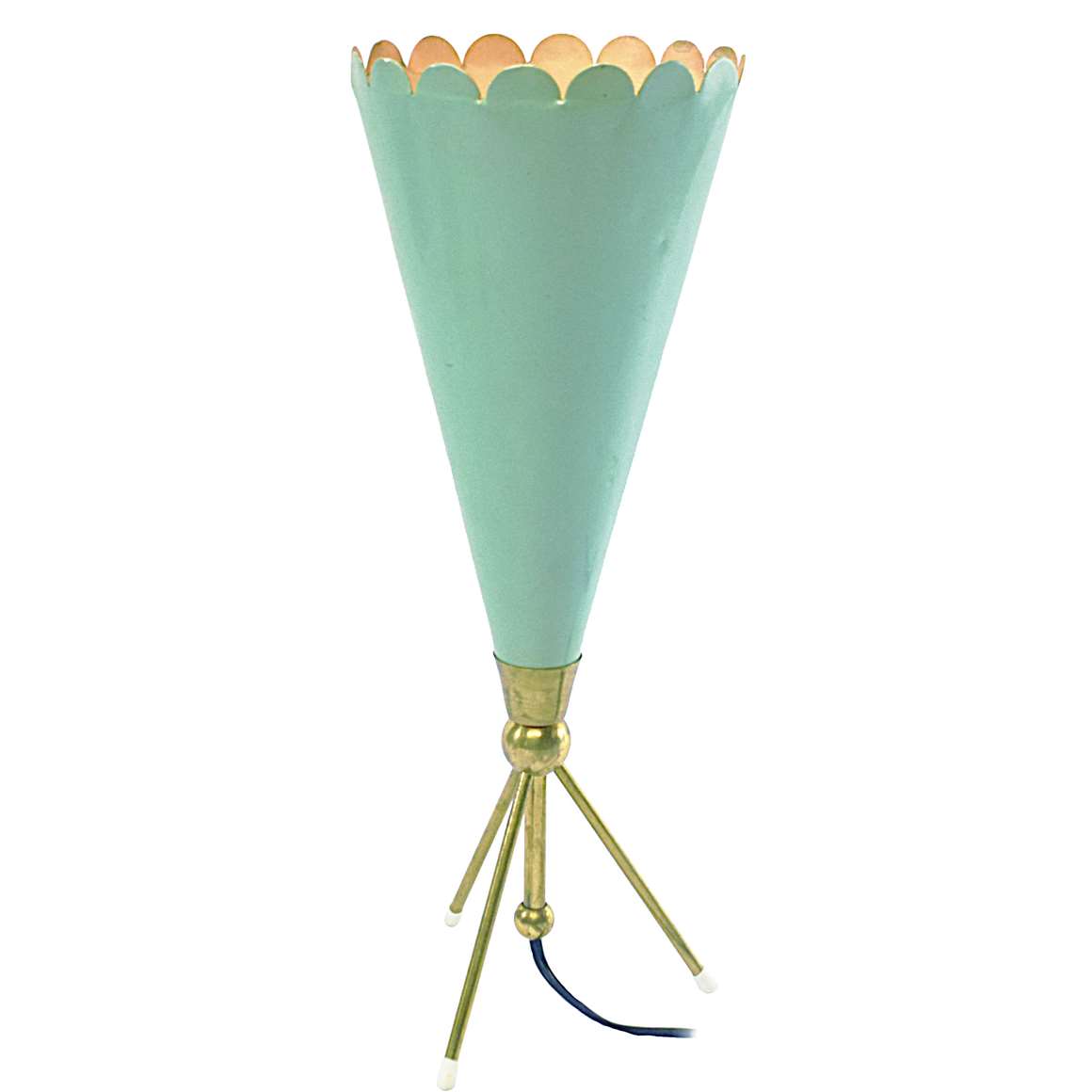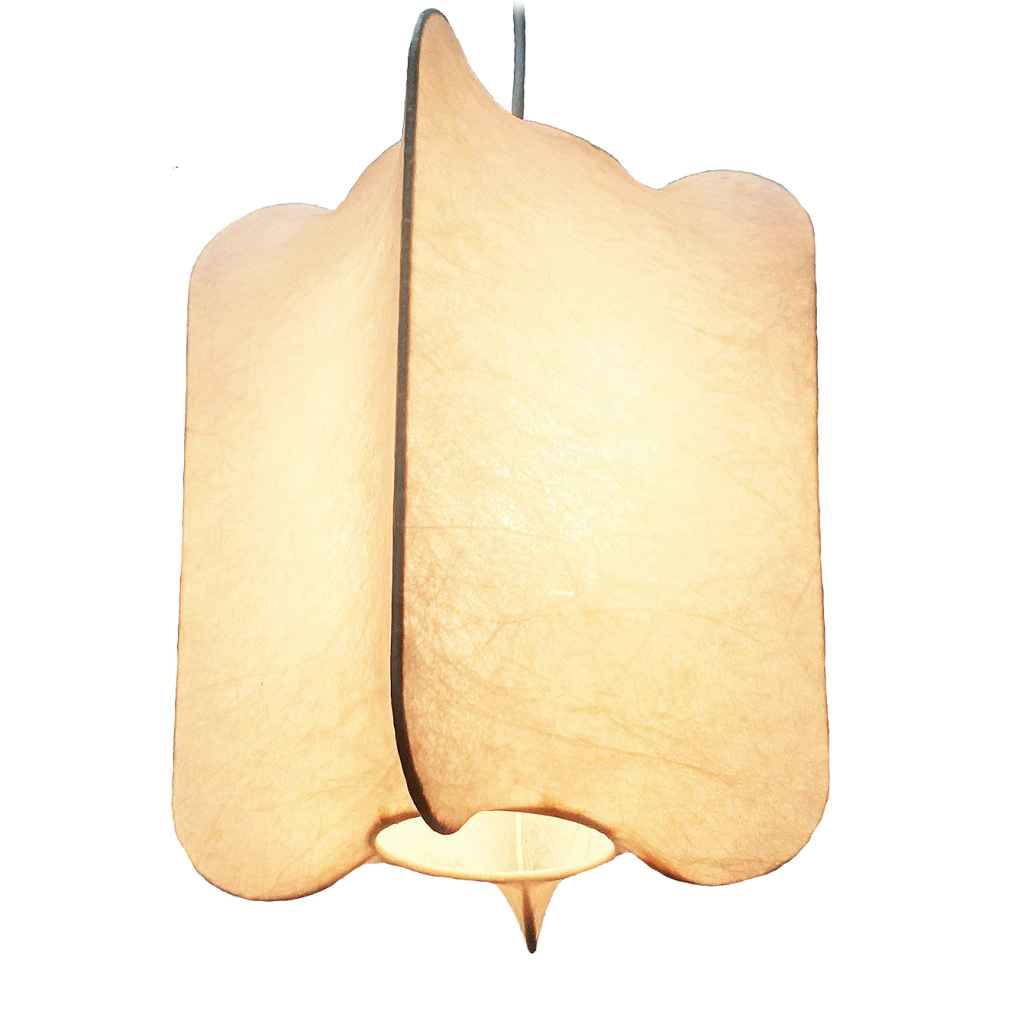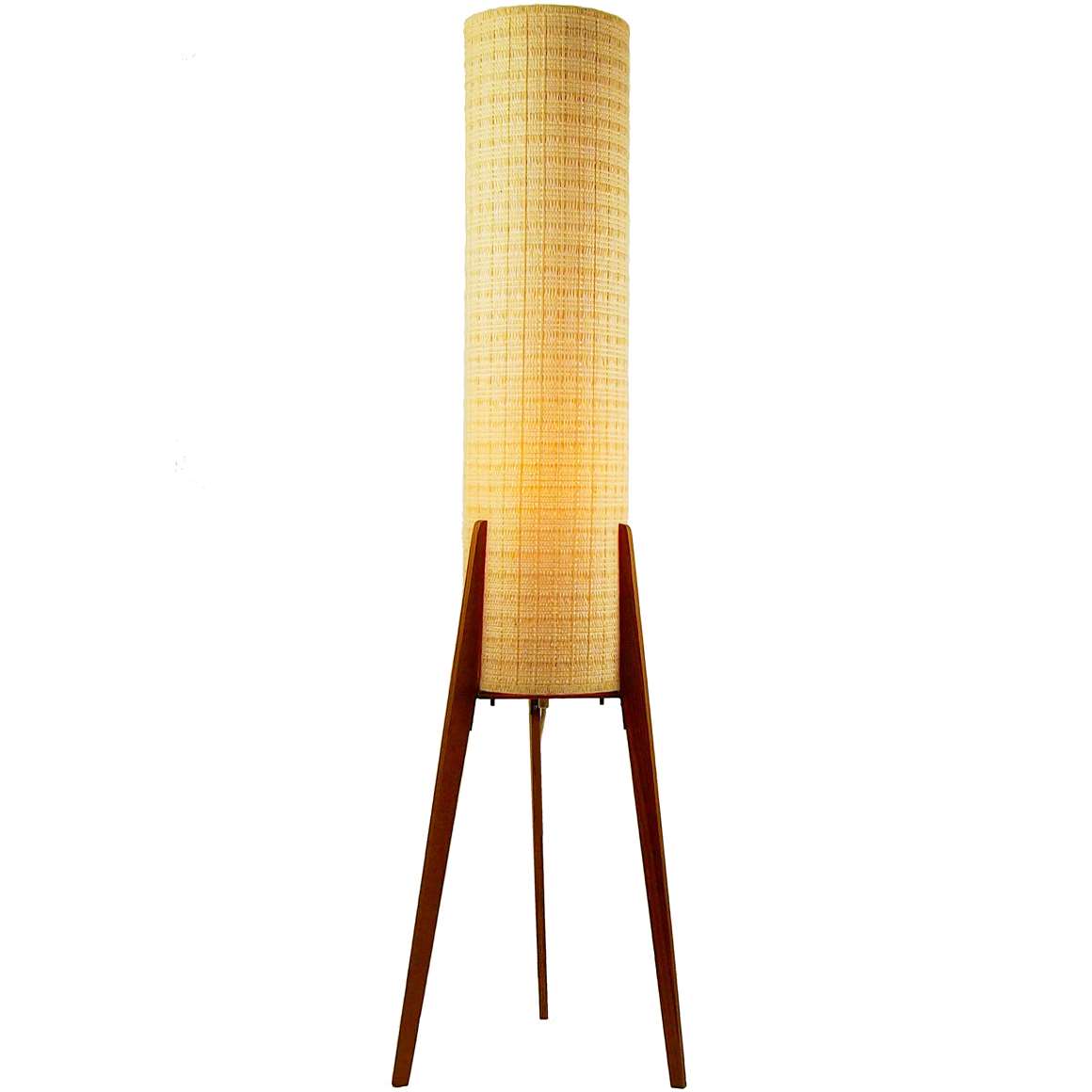George Nelson Bubble Pendant Lamps
The Castiglioni Brothers
One of the most famous lamps created in Cocoon is the “Gatto ” designed by Achille & Pier Giacomo Castiglioni in 1960. The lamp is still in production. More info on the Flos website.
In the late 1950s Arturo Eisenkeil brought the technique to Europe and together with Dino Gavina, Achille and Pier Giacomo Castiglioni, Sergio Biliotti, Carlo and Tobia Scarpa, Ignazio Gardella, to name the most important designers, the Flos company was born.
How these lamps are made by Eisenkeil for Flos, impressive video!
Artimeta Lugano Tripod Cocoon Floor Lamp
Materials: Tripod base made of a metal frame in black painted iron wire rods, with a handle on top. Elongated plastic Cocoon lampshade. 2 Bakelite E27 sockets.
Height: 110 cm / 43.30”
Width: ∅ 23 cm / 9.05”
Electricity: 2bulbsE27, 2 x 75 watt maximum, 110/220 volt. Anytypeof light bulb canbeused, not a specific one preferred.
Period: 1960s – Mid-Century Modern.
Designer: H. Klingele.
Manufacturer: Artimeta, Braamweg 43, Soest, The Netherlands.
Other versions: This Artimeta Lugano tripod cocoon floor lamp was made in several versions.
It is often suggested that the plastic used for these lamps was made of pig’s bladder, but that’s a hoax, of course.
Artimeta
Artimeta was founded by Floris H. Fiedeldij in 1960. Artimeta produced luxury lighting and furniture. Also French designer Mathieu Matégot created several items for Artimeta. Most products were sold in Germany.About 15 people worked for the company.Because Artimeta was booming, Fiedeldij was searching for investors.
Through Mr. W. H. Fockema, a banker, he met Mr. Schoon, director of Transcarbo, a subsidiary of the Oranje Nassau Mines in Heerlen.
A few months later it all went in the wrong direction.The ex-miners, however well-intentioned, could barely handle the fine materials and screws.Customers started to complain about the long waiting times and poor workmanship.
Fiedeldij was confronted with an unimaginable bureaucracy.For example, an order for 1000 screws had to be initialled by 10 people before anything happened.
After he went to complain to the management of Orange Nassau was Fiedeldij dismissed.A little later the factory was closed and transferred to Heerlen.
Only five people were still working and only lamps were imported from Germany and Italy.They no longer produced lamps themselves. The company imported lamps made by Vistosi, Venini, Stilnovo, Martinelli Luce and several other famous companies.
In 1975, Fiedeldij wrote in a bitter letter: “In summary, it can be concluded that an Italian lamp factory is kept alive with Dutch government subsidy and that a Dutch company, which could employ at least 35 people, due to mismanagement has been grounded by the subsidized company in question.”
As the “Het Vrije Volk ” newspaper emphasized in the title:A Brabant manufacturer receives an attractive offer.Oranje Nassau takes over his thriving company and says it wants to expand for employment.But the dream is soon over: production was deliberately killed.
After the bankruptcy, the company got a restart under the name Art Light. Today the Artimeta name is back in use and they are importer, producer and distributor of design lighting. Today the are located in Amstenrade.
Cocoon Leuchten
Friedel Wauer who is credited by Flos for devising the technology of spraying this plastic material onto iron frames, was inspired by the “self-wrapping” of a silkworm, hence the naming “Cocoon ”. More info about the company can be found here on Vintageinfo.
George Nelson
The first designer who used this kind of material is George Nelson in 1947 for his Bubble Hanging Lights. The technique had been developed for mothballing naval ships. George Nelson referred to these lights as “one of those happy accidents which occur all too infrequently in the designer’s experience”.
